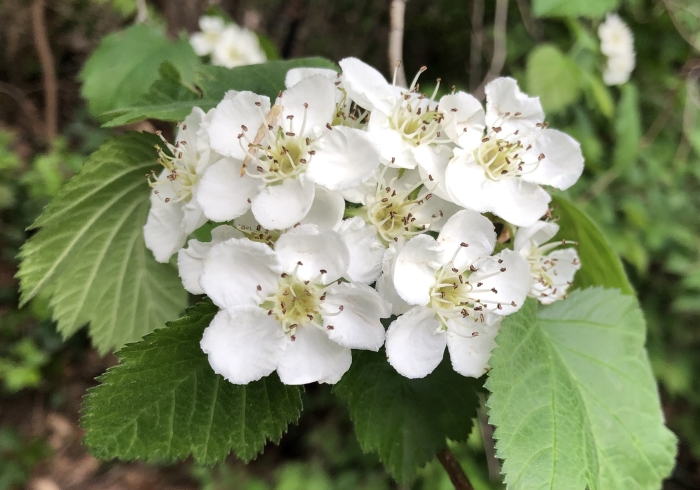Downy Hawthorn
(Crataegus mollis)
Downy Hawthorn (Crataegus mollis)
/
/

jonsense
CC BY 4.0
Image By:
jonsense
Recorded By:
Copyright:
CC BY 4.0
Copyright Notice:
Photo by: jonsense | License Type: CC BY 4.0 | License URL: http://creativecommons.org/licenses/by/4.0/ | Rights Holder: jonsense | Publisher: iNaturalist | Date Created: 2024-04-12T18:44:41-07:00 |























Estimated Native Range
Summary
Crataegus mollis, commonly known as Downy Hawthorn, is a deciduous tree native to river bottomlands, moist woodlands, and edges of swamps in eastern North America, ranging from southeastern North Dakota to Nova Scotia and southwest to eastern Texas. It typically grows to a height of 33-43 feet with a dense, rounded crown of thorny branches. The tree is notable for its white flowers that bloom in late spring, creating a showy display that is attractive to pollinators. The flowers give way to large, bright red edible fruits that ripen from mid-August to early September and are enjoyed by birds and wildlife.
Downy Hawthorn is appreciated for its ornamental flowers, edible fruit, and the wildlife habitat it provides. Despite its thorns, it can be used in naturalized plantings or as a specimen tree in larger landscapes. It requires full sun to part shade, moist, well-drained soil, and is tolerant of a range of soil types, including clay. However, it is not commonly used in urban settings due to its thorny branches and disease susceptibility. The tree’s thorns and dense branching can also make maintenance challenging. Gardeners should be aware of its vulnerability to pests like Gypsy moths and diseases such as leaf rusts and fire blight.CC BY-SA 4.0
Downy Hawthorn is appreciated for its ornamental flowers, edible fruit, and the wildlife habitat it provides. Despite its thorns, it can be used in naturalized plantings or as a specimen tree in larger landscapes. It requires full sun to part shade, moist, well-drained soil, and is tolerant of a range of soil types, including clay. However, it is not commonly used in urban settings due to its thorny branches and disease susceptibility. The tree’s thorns and dense branching can also make maintenance challenging. Gardeners should be aware of its vulnerability to pests like Gypsy moths and diseases such as leaf rusts and fire blight.CC BY-SA 4.0
Plant Description
- Plant Type: Shrub, Tree
- Height: 20-40 feet
- Width: 20-40 feet
- Growth Rate: Moderate
- Flower Color: White
- Flowering Season: Spring, Summer
- Leaf Retention: Deciduous
Growth Requirements
- Sun: Full Sun, Part Shade
- Water: Medium
- Drainage: Fast, Medium
Common Uses
Bank Stabilization, Bird Garden, Low Maintenance, Showy Flowers
Natural Habitat
River bottomlands, moist woodlands, and edges of swamps in eastern North America
Other Names
Common Names: Arnold Hawthorn , White Thorn , Downy Haw , Red Haw , Red Hawthorn , Summer Haw , Turkey-Apple
Scientific Names: Crataegus mollis , Crataegus acerifolia var. sera , Crataegus albicans , Crataegus arkansana , Crataegus arkansana subsp. dumetosa , Crataegus arkansana var. dumetosa , Crataegus berlandieri , Crataegus brachyphylla , Crataegus caesa , Crataegus cibaria
GBIF Accepted Name: